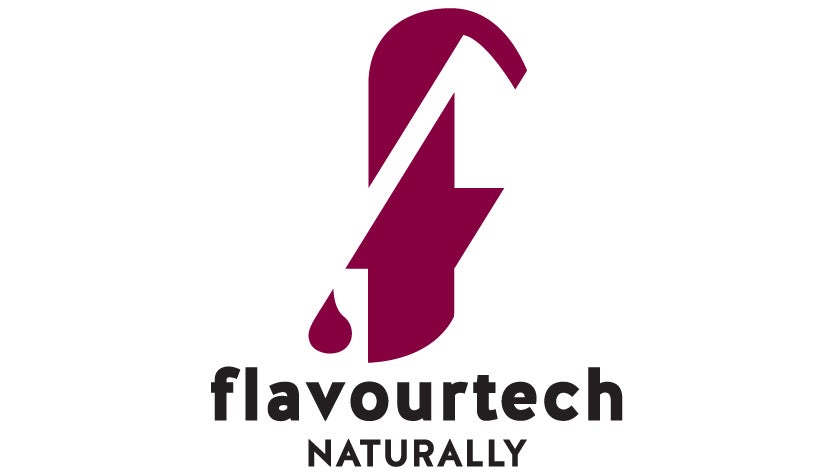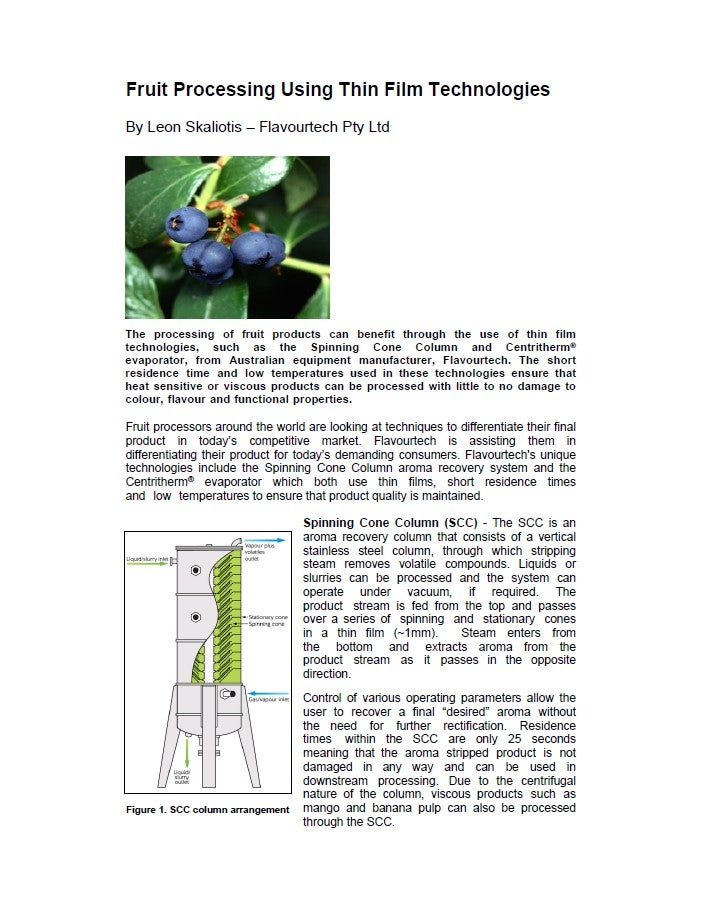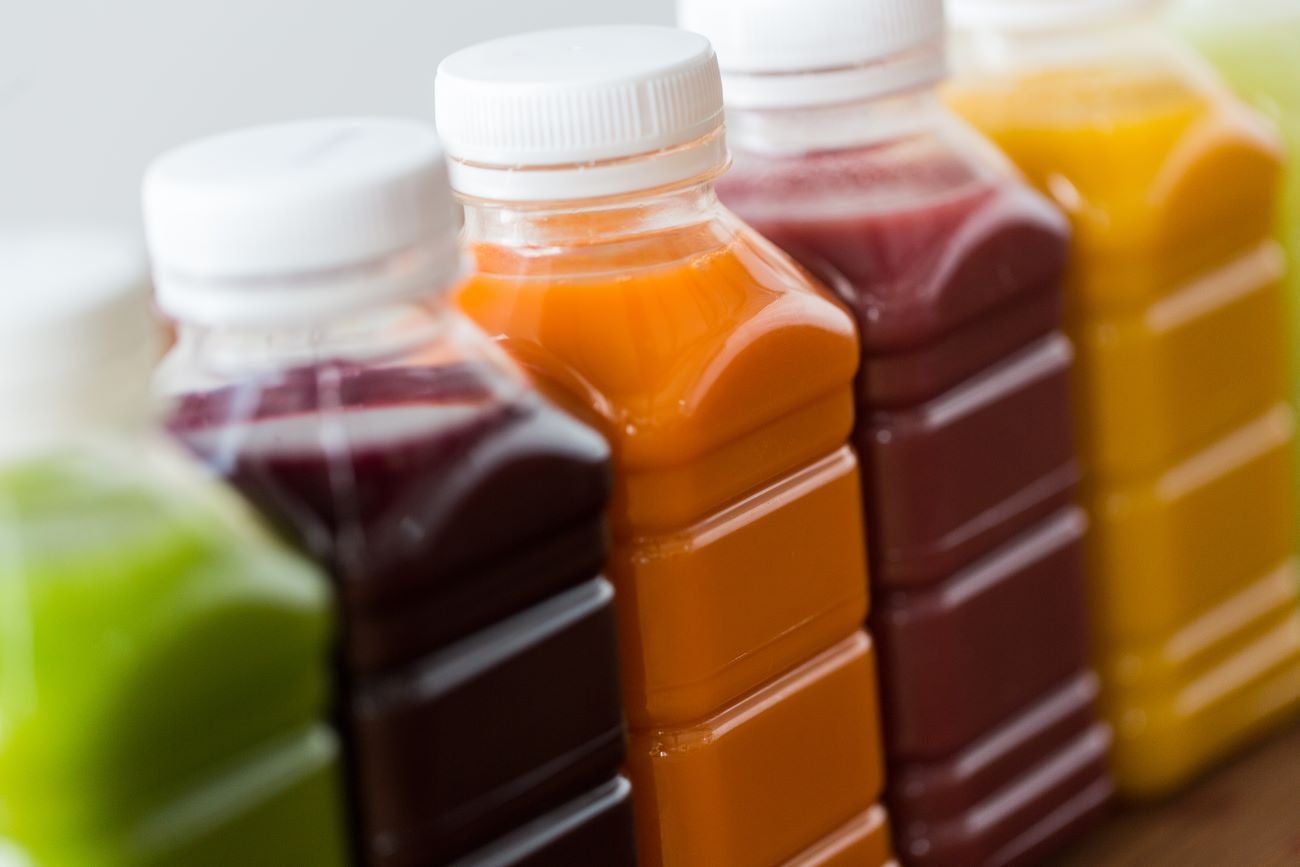
It is estimated that one third of food produced is either lost or wasted between the farm and the plate according to a 2019 report by the World Resources Institute (WRI). The report highlights where these losses have come from across the food supply chain, including the farm, production, handling and storage, distribution, market and finally consumption.
In North America and Oceania, 21% of wastage is attributed to production alone. In order to reduce food wastage, the United Nations (UN) has set Sustainable Development Goals (SDGs) with a 2030 deadline. One of many benefits of the SDGs is the preservation of valuable ecosystems – as opposed to turning them into agricultural land – while still being able to feed the world’s population.
Flavourtech, a manufacturer of food and beverage process systems in Australia, has been assisting manufacturers in mitigating their waste output and the associated impacts on the environment.
The Spinning Cone Column: turn waste into profit
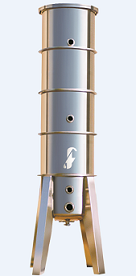
Flavourtech’s flagship technology, the Spinning Cone Column (SCC), is typically used by flavour companies for flavour extraction from fruit, vegetables, herbs, spices, tea and coffee. As well as clear liquids, the technology is able to extract flavours from both viscous materials (like purees) and those with high levels of suspended solids (like slurries of milled tea leaves and water). This capability means the SCC can also extract aqueous flavours and essential oils from both waste streams and process water in standard food and beverage (F&B) manufacturing.
Example 1: Fruit & vegetable juices
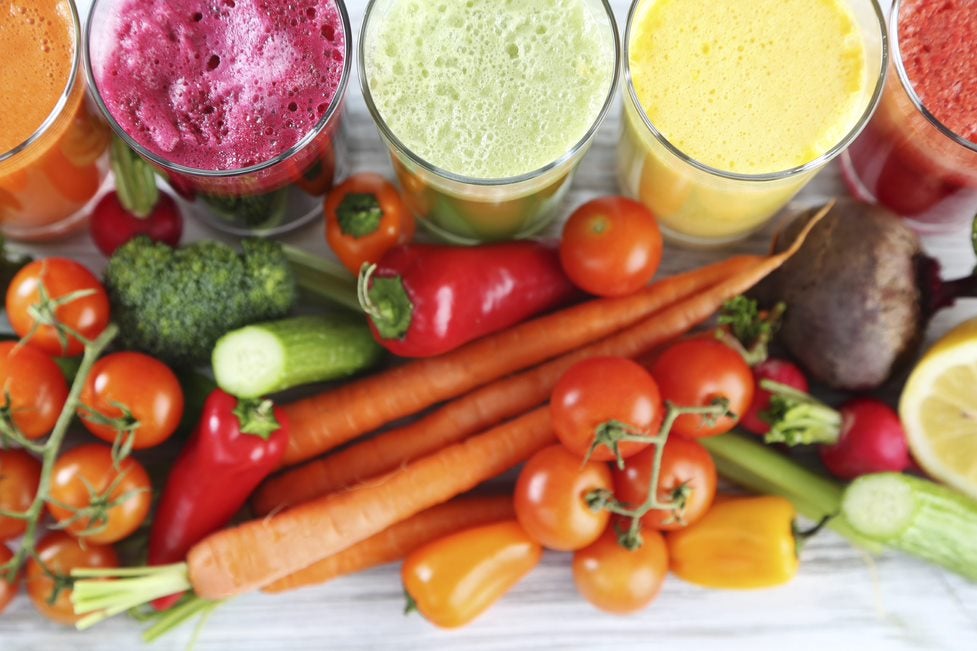
An abundant source of natural flavour is the waste generated from processing fruit and vegetable juices. Pressed juice contains 60 to 80% of the total aroma and flavour compounds available from whole fresh fruit or vegetables; the other 20 to 40% resides in discarded solids which are unable to be processed by traditional aroma recovery systems.
They are, however, easily handled by the SCC. The SCC enables recovery of volatile aroma compounds from such sources and can include milled, slurried apple and berry pomace or oil and aqueous essence from onion tops, tails and culls. These natural aroma factions can then be used to improve current products, develop new ones or sold to flavour companies as additional revenue streams.
Example 2: Fruit & vegetable concentrates
A major waste stream in facilities producing concentrated juice is evaporated water – or condensate – containing light aroma volatiles that can be captured by the SCC and used in their own right. Furthermore, the water stripped of the volatiles exiting the SCC is cleaner and can be reused or recycled within the factory.
Concentration of evaporator condensates maybe also be undertaken using a new solution Flavourtech is offering in partnership with Danish company, Aquaporin A/S. Aquaporin Inside® natural concentration technology is based on forward osmosis. It has been developed by Aquaporin as an alternative way to concentrate natural aromas without the use of heat or pressure.
“Uniquely, Flavourtech’s SCC technology is able to extract flavours from waste streams containing high levels of suspended solids.”
Example 3: Winery waste streams
In addition to dealcoholising wine, wineries use the SCC to recover flavour and alcohol from solids-containing steams, such as marc or yeast slurry. For example, the SCC may be used to recover high strength alcohol and flavour directly from tank bottoms at the end of fermentation and fining processes. Such a feed stream contains a high content of settled yeast.
The ability of the SCC to process suspended solids makes it possible to recover the alcohol from this yeast. This approach eliminates alcohol losses associated with wet yeast as well as reducing effluent problems associated with spent yeast. The SCC enables wineries to meet environmental goals and create additional alcohol streams for use either within the winery or by another party.
Example 4: Cold brew coffee
When it comes to cold brew coffee, the manufacturing process typically involves coffee grounds being steeped in cold or ambient water for many hours. The spent grounds are usually thrown away with usable aroma and unextracted soluble solids remaining.
The SCC can be used to effectively capture these components. Similar to wine and juice producers, this creates new revenue streams for the manufacturer and maximises the return from spent grounds before sending them to compost.
Example 5: Mustard seed meal
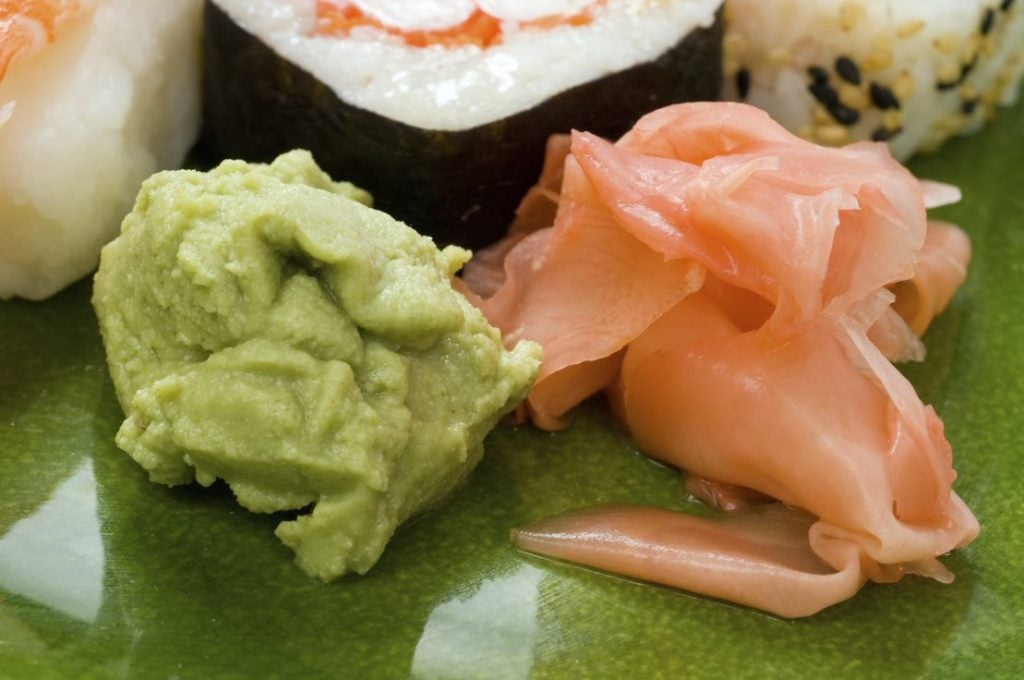
The SCC can be used in conjunction with another of Flavourtech’s technologies, the Rotating Disc Column, to extract AITC from used mustard seed meal. The process produces colourless and valuable AITC oil which is sold to food companies for flavour addition in products such as Wasabi.
Meanwhile the spent meal, which was previously rejected by farm animals due to its taste, can be eaten – eliminating a waste stream in the mustard production process.
The Centritherm® evaporator: economise on energy, boost bottom lines
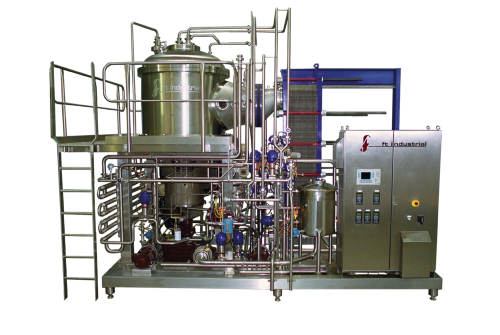
Another of Flavourtech’s technologies is the Centritherm® evaporator. This technology gently increases solution concentration while maintaining the integrity of the feed material. It helps manufacturers reduce their environmental impact through two different methods.
Method 1: Reducing transportation volumes
In beverage industries, such as the Ready-To-Drink tea and coffee industry, bottling plants are usually located some distance from the extraction plant. Companies know that transporting concentrates is far more cost effective and environmentally friendly – thanks to lower emissions – than transporting a whole, largely water-based product.
Using the Centritherm® evaporator enables companies to concentrate tea and coffee extracts to high levels thus reducing transportation volumes. But, with this technology, they can do so while protecting the flavour, health and colour characteristics of the final product.
Method 2: Reducing dryer throughputs
The Centritherm® evaporator also assists production of instant coffee where dependence on spray dryers to form coffee powders can be extremely energy intensive. This energy is usually derived from the burning of gas or other materials to evaporate water from coffee extract. More water in the extract means more energy is required to remove it.
By reducing the water content of the extract, while avoiding damage to the extract itself, the Centritherm® evaporator is reducing energy consumption in the subsequent drying step. Manufacturers get the same quality product for lower cost and achieve both economic and environmental benefits.
The Flavourtech solution
The SCC and Centritherm® evaporator rely on steam and electricity power – both of which are available to manufacturers from renewable energy sources. The two technologies also occupy minimal factory footprints and produce natural, biodegradable products, limiting their impact on the planet and its resources.
Flavourtech’s philosophy is that, by helping customers make manufacturing waste streams usable and capturing their valuable components, it’s a win for the customer and the environment. To learn more about green manufacturing processes on F&B production lines, download the whitepaper on this page.

